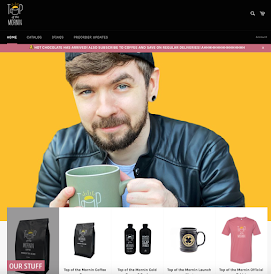My brief is to create an advertising campaign to promote my TV show that was pitched in the last unit. It must be cross media (some traditional media, some digital media) for the TV show that I pitched in the last unit. It needs to comply with all regulations (ASA, BCAP) and complies with the conventions of individual media e.g radio must have a voice-over and sound effects and a tv show must include short bursts of footage from the show itself with intermittent titles saying when the show is going to air. Since it is going to be viewed on BBC 3, I need to establish why BBC 3 and how it's going to stand out against Netflix, its greatest competitor.
I am advertising Face the Past which is aimed at a 15-25 age demographic. As shown by my primary research post from my Unit 21 Plan and Pitch unit of which the full post is linked here, it demonstrates that the majority of people watch shows for both the characters and the narrative. As for the genre and themes more widely, I found that people want a show about a criminal underworld and mental health.
'I mention my target audience for my tv show in depth in my Proposal for my tv show which is linked here. I explain that the demographics for my target audience would be people between 15-21, and are primarily of a male demographic as looking at the audience surveys, it shows that a larger male audience would enjoy the crime aspect more than other genders, possibly this may be because of the violence or themes, but females and non-binary people might also like the show as the audience research wasn’t only males, there was also a high amount of non-males interested in crime shows.
As some of the characters will be representative of different sexualities, this might hopefully attract the LGBTQ+ community to the show as is not going to queerbait like other shows have in the past such as Riverdale.
My target audience would be interested in crime shows, mystery and possibly comedy as my show is going to occasionally have some comedic aspects so the tone doesn’t stay too depressing. Additionally, although education level isn’t a large factor in the viewership, since the characters will be attending a college, my target audience is people who are currently attending full time education, either a college, an apprenticeship, or an university to be able to have the personal identity of the audience pleasures and relate to the characters and so that they would be of a similar age to the characters.'
Taking this on board, the campaign would feature heavily on social media (primarily instagram, twitter, snapchat- specifically stories-) as 15-21 yr olds now stream more than watch tv with the family. Social media would be the most easily accessible method as then anyone can view it and follow along if they show an interest.
What can you do to work out exactly who the target audience of your show is going to be? think about what research you could carry out and how you will conduct it.
As well as conducting an audience survey about what shows they like to watch, I also asked a focus group for their opinions. here
Social media engagement is measured by a range of metrics that could include the following:'
- Shares or retweets
- Comments
- Likes
- Followers and audience growth
- Click-throughs
- Mentions (either tagged or untagged)
- Using branded hashtags








